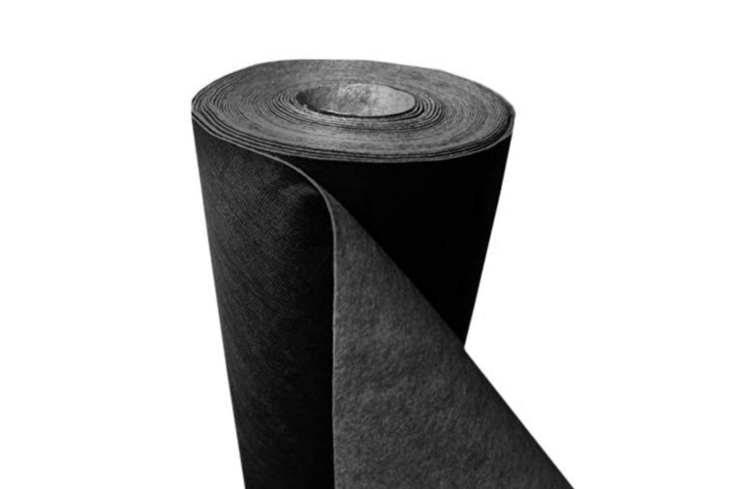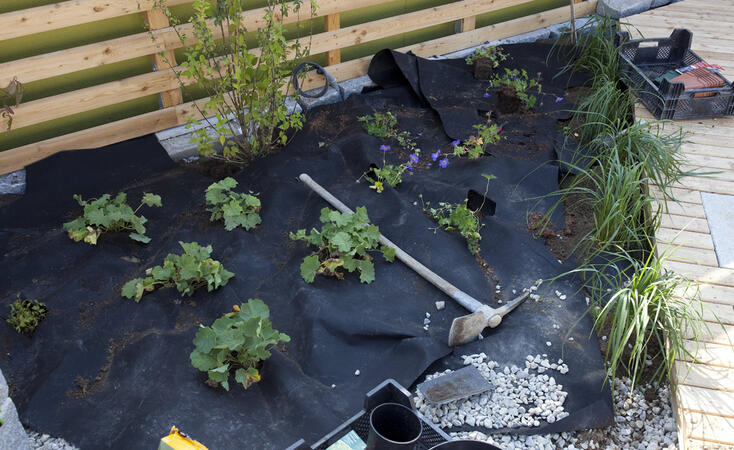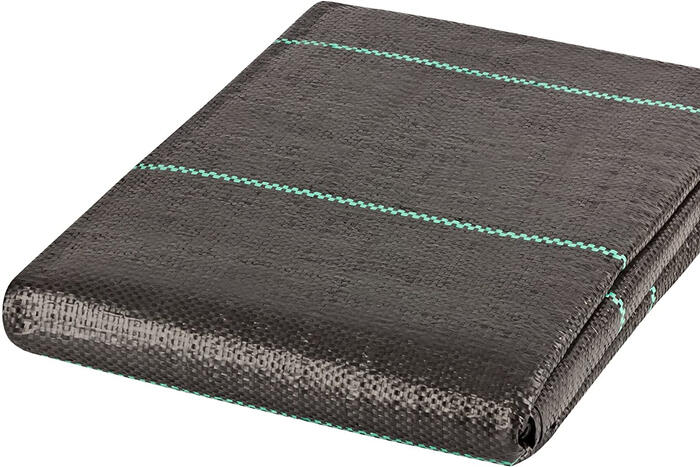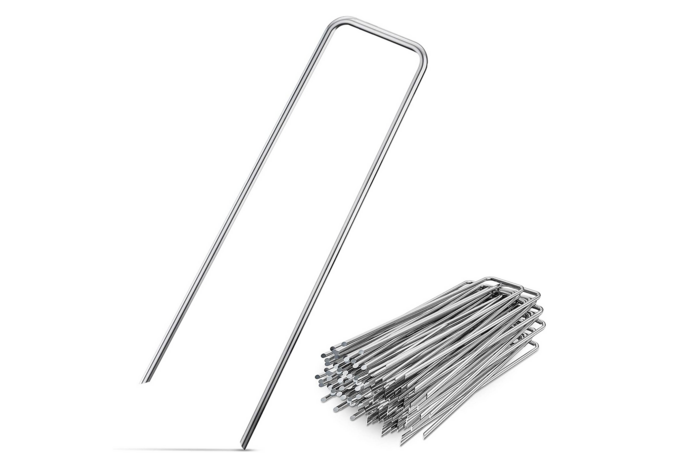Laying weed fleece in the bed saves time in the garden – annoying weeding is eliminated. If you use the practical weed protection correctly, you can also do your plants or vegetables good with it. Which variant to use for what and how you can easily lay the mulch fleece yourself.
Contents
What can I use weed fleece for?
Growing vegetables or fruits.
The uses of weed fleece, also called mulch fleece, are many. Those who grow vegetables or strawberries professionally usually use a thin version, which is biodegradable, or geotextile (see below). The goal: to keep your bed weed-free. However, this is not the only positive effect of weed fleece. The dark soil cover provides warmer soil and makes plants grow faster. Biodegradable fleece rots until the end of the season. Then you can work it into the soil.

Flower garden
A bed in the ornamental garden is covered with weed fleece for a long time. The synthetic variant is suitable for this purpose. The fleece lasts up to 25 years – depending on the manufacturer, the quality, whether it was laid professionally, as well as covered with mulch and thus protected from UV radiation.
How do I choose the right weed fleece for my bed?
Both weed fleece and weed film can be found in specialty stores. The former, unlike the latter, is permeable to air and water. This allows rainwater for the plants to penetrate to the ground, and gas exchange in the soil is not hindered. Whether you should use folded rectangular formats or roll material depends on the area. For large beds and gravel paths, a roll product is usually best. Synthetic mulch fleece is made of synthetic fibers such as polyethylene or polypropylene. Fine, long, non-woven threads create a felt texture. When choosing, you will come across the specification grams per square meter. This value gives information about the quality: heavier means thicker and therefore more durable.
These material thicknesses are suitable for your bed
- 50 to 80 grams per square meter: planting areas covered with bark mulch that are only slightly weedy and that you rarely walk on.
- up to 150 grams per square meter: beds with many root weeds that are mulched with sharp-edged chippings and frequently walked on. In addition, for the gravel or rock garden and gravel paths. This starch provides, for example, couch grass, goutweed and horsetail. In addition, it does not become pitted so quickly when walked on, which is especially important for gravel and stone surfaces. Caution: The higher the material thickness, the less water and air penetrates the weed fleece. This can lead to ornamental plants growing worse.
- 50 grams per square meter of double-layer weed fleece is more permeable and therefore usually the better alternative to 100 grams of single-layer fleece. However, the double-layer variant is only suitable for areas without excessive mechanical stress. When laying, the fleece sheets should overlap by 10 to 20 centimeters. Caution: The material thickness can thus be around 300 grams per square meter in some places. Think through well whether the (planned) placement of plants in your bed will allow it.

What is the difference between weed fleece and geotextile?
So-called tape fabric such as the GardenMate anti-weed fabric subsoil fabric is also often called weed fleece in the trade. However, soil fabric or geotextile are the technically correct names for it. You can recognize it by thin, narrow, black plastic threads that are woven together. Just like real weed fabric, it suppresses wild weeds. Geotextile is easy to cut. The disadvantages: It frays at the cut edges. In addition, it is less permeable than weed fleece. However, geotextile has the advantages of being more UV stable, more robust and less expensive. It is mainly used on growing areas for container plants in professional horticulture to suppress weeds there.

Laying weed fleece: this is how it works
In these steps you can lay weed fleece yourself professionally:
- First, carefully remove the weeds one last time – including the roots. Sharp-edged stones should also be collected. Then, still in preparation, loosen the soil. If necessary, you can improve it with sand and humus. Finally, level the area with a rake. It is then best to let the whole thing rest for about a week so that it can settle.
- Now it’s time to lay the weed fleece. Start in a corner of your choice. Make sure that the fleece does not wrinkle. Fix the mulch fleece at the edge of the bed with special soil anchors, such as the GardenGloss anti-rust soil anchors for weed fleece. If you are using rolls, lay them in strips. At least ten centimeters of overlap is recommended. You should fix this overlap with a maximum distance of 50 centimeters from other fixings with ground anchors. Do you want to install a fixed bed edge made of concrete blocks? In this variant, the fleece should lie directly against the stones, so that even at the edge no more weeds come through. If there are places in the bed where a lot of root weeds have appeared in the past, it is recommended to lay light mulch fleece twice here. If there are trees or shrubs in the area, you should proceed as follows: Cut the fleece vertically from the side and place the cut edges around the base of the trunk.
- Once you have laid the weed fleece over the entire bed area, it is the turn of the planting. To do this, first lay out the new plants at the desired distance. Then cut a cross slit in the fleece at the places to be planted. Now you can plant perennials, woody plants and co. as usual. Caution: The weed fleece must not be covered with soil. In addition, it should lie as close as possible to the plants.
- Finally, conceal the fleece with a layer of mulch. For this purpose, conventional bark mulch or a soil layer of gravel or chippings is suitable. A thickness of five to seven centimeters is sufficient. In general, the mulch layer should provide an attractive appearance. But in the ornamental garden it is also necessary for practical reasons – for durability. It protects against UV light and thus ensures that the weed fleece remains reliably tight for years – so you can look forward to a long time without weeds.



